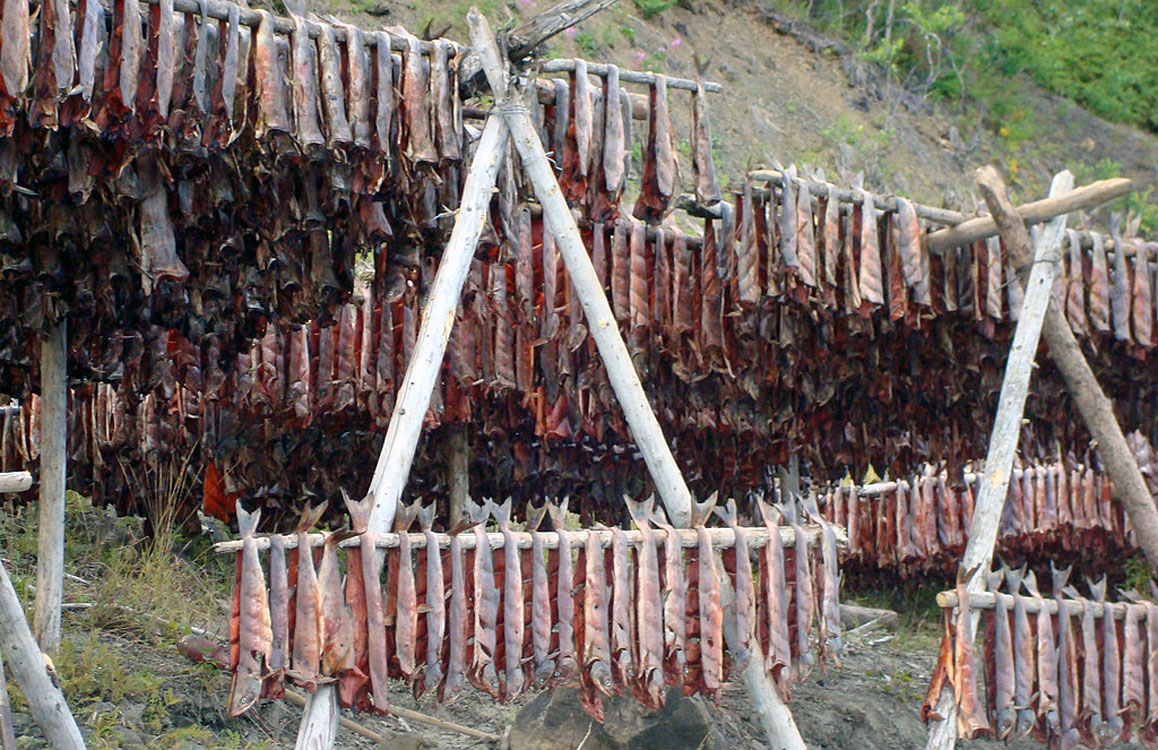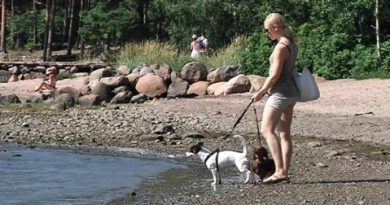On Alaska’s Yukon, dismal king salmon returns have villagers on edge
 Initial king salmon returns were expected to be bad in Alaska this year, but it looks like those runs might be even worse than first thought.
Initial king salmon returns were expected to be bad in Alaska this year, but it looks like those runs might be even worse than first thought.
As of Tuesday, only 5,800 kings had passed the Yukon River sonar station at Pilot Station, a village located 120 miles from the river delta, since the run began earlier this month. The typical number kings to pass by the same date? 17,400.
Feeble king runs were forecast on the Yukon River this year; biologists projected that only 109,000 to 149,000 fish would return. Now even those low predictions may be wildly optimistic.
This week, the Alaska Department of Fish and Game required Yukon River subsistence fishermen seeking chum salmon to reduce their net mesh size from 7.5 to 6 inches to avoid intercepting the first pulse of kings moving up the river.
Subsistence fishing in district one of the Yukon River Management Area, which includes the villages of Emmonak, Alakanuk and Nunam Iqua, closed Wednesday morning. The next period was scheduled to begin Thursday, but was cancelled. The department will notify fishermen by June 24 when the next session will open.
‘Not looking good’
It’s the best the state can do right now to make sure the king run isn’t overfished, said Stephanie Schmidt, a summer research biologist for the Alaska Department of Fish and Game who’s working the Yukon River.
“If they do (increase) we’ll sit down and reconsider our management plans,” Schmidt said. “If they don’t start to pick up, it’s not looking good.”
King salmon runs across the state are expected to be poor this year. The Kuskokwim River, Norton Sound, the Nushagak River in Bristol Bay and Cook Inlet are all looking at diminished returns. On Friday, the state will close king fishing on the hugely popular Kenai River after record-low returns so far.
The low runs have also left commercial fishermen in the Yukon Delta docked and waiting. Despite a river full of chum salmon — the state expects a run of 1.5 to 2 million of them this season — fisherman can’t get to them for fear of catching a king instead.
Late or missing?
Generally, kings travel up the Yukon River in three big pulses, Schmidt said. Based on historical data that first pulse – about 25 percent of the total run — happens on June 15. On years when the kings are running late, that date is moved back. Historically, the “late” date is today, June 21.
The latest first pulse of “late” years came on June 25. Whether or not this year will meet or surpass that date isn’t known.
“Right now it looks like the run is progressing later than even the average of late years,” Schmidt said. There’s also a possibility the run could pick up dramatically, she noted. This year is different in terms of run timing because coastal sea ice only went out a few days ago.
“We had coastal ice for a long time,” she said. “Talking to folks, it was unlike anything they’d ever seen before.”
Commercial fishing halted
At Kwik’Pak Fisheries, based in Emmonak in the Yukon River Delta, General Manager Jack Schultheis has his fleet on standby. In a normal year, his processing plant would have seen upwards of 100,000 salmon, mostly chums.
This year? Not one.
“There’s not much else we can do,” he said. “The department is doing everything it can to allow us to fish with the low number of kings. It’s really difficult to give us a commercial opening.”
The fishery is small in that all of its fish comes from small boats — mostly 20-foot skiffs manned by families. Kwik’Pak is the only processor left in the community. Commercial fishing is one of the only ways to earn cash in the small village of about 800 people. Without cash, it becomes difficult to pay for subsistence fishing.
“You can’t use food stamps to buy gas,” Schultheis said.
In 40 years of working in fisheries, Schultheis has never seen king returns so bad. He understands that it’s frustrating for everyone involved and that salmon returns fluctuate yearly. Still, it’s hard to sit back and watch chum salmon swim by.
“It’s somewhere between terrifying and depressing because the fish run and then there isn’t any more. It’s not something you can push off until next week,” Schultheis said. “People are now at the point, ‘What are we going to do?’ It’s getting to be a real crisis.”
Appeal to the governor
Myron Naneng, president of the Association of Village Council Presidents, met with Gov. Sean Parnell on Tuesday and asked him to declare a disaster over the lack of kings available in the Kuskokwim and Yukon rivers.
State biologists predicted 197,000 kings will return to the Kuskokwim this year, well below the average run of 260,000. According to the state, the Kuskokwim is the largest subsistence salmon fishery in Alaska.
The state hasn’t acted yet, saying it needs more time to see how the runs develop.
But for Naneng, time is running out. The fish are running and this is the prime time to collect and dry salmon. He doesn’t think the state is listening to the people of the area who have fished there for generations.
“I’m not going to tell you not to go fishing because you need the food,” he said. “The state and the feds are not going to feed you.”
Contact Suzanna Caldwell at suzanna(at)alaskadispatch.com
For more stories from Alaska Dispatch, click here



